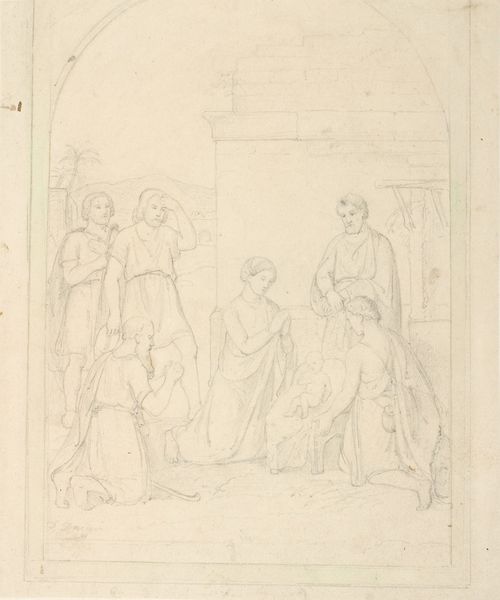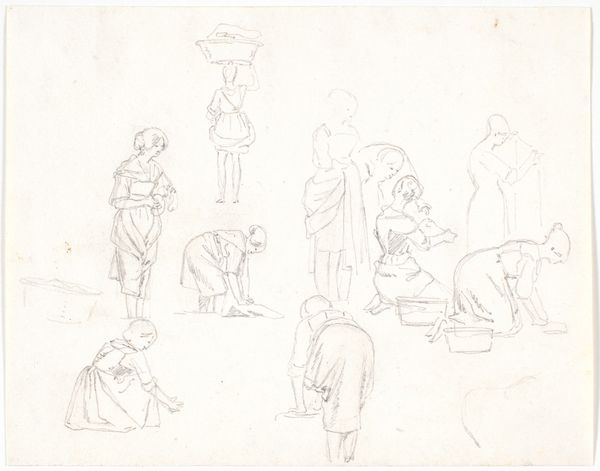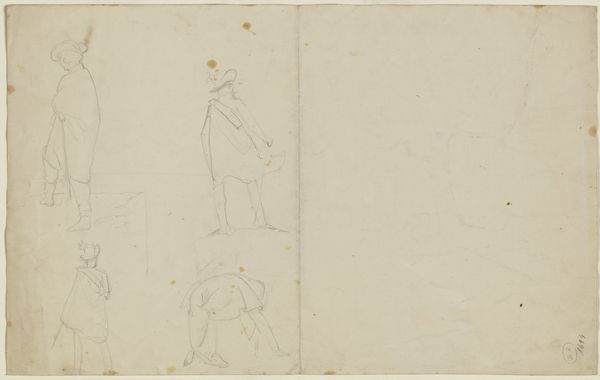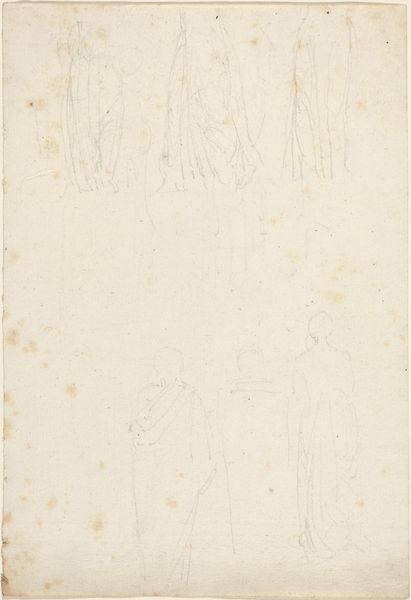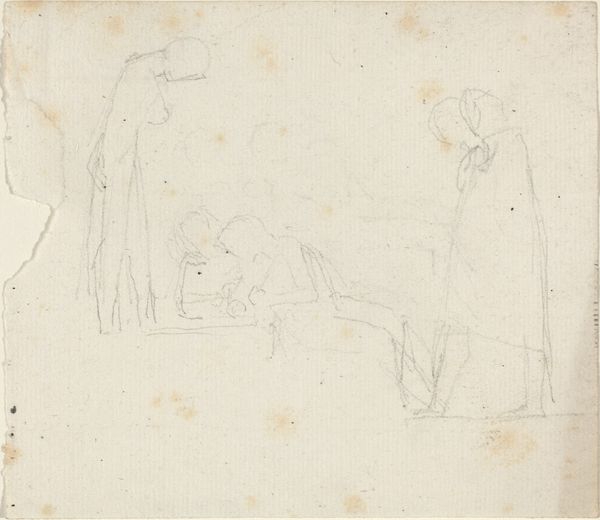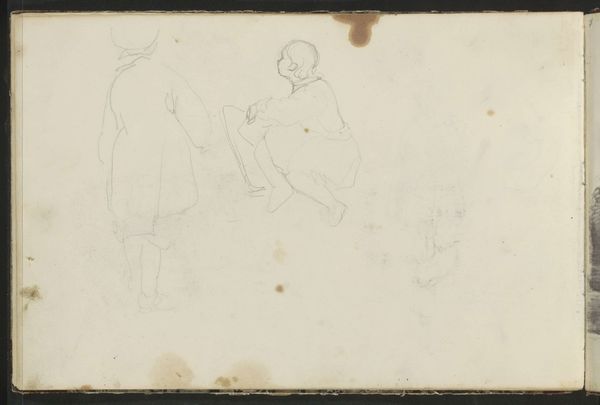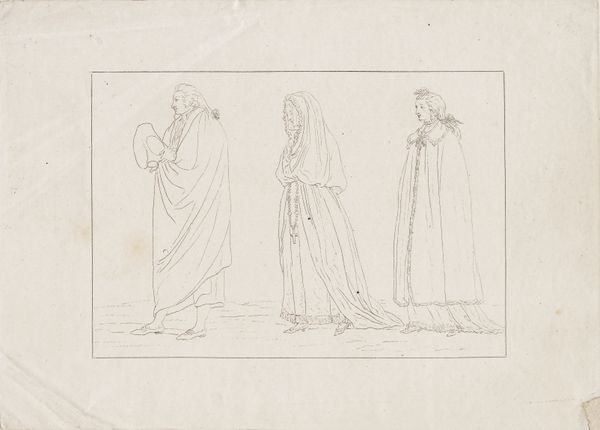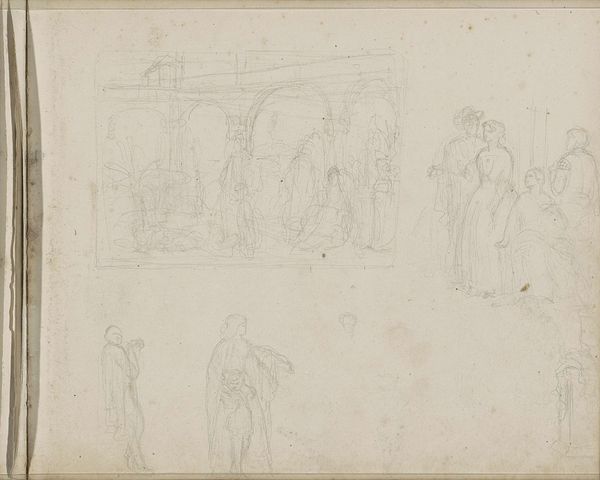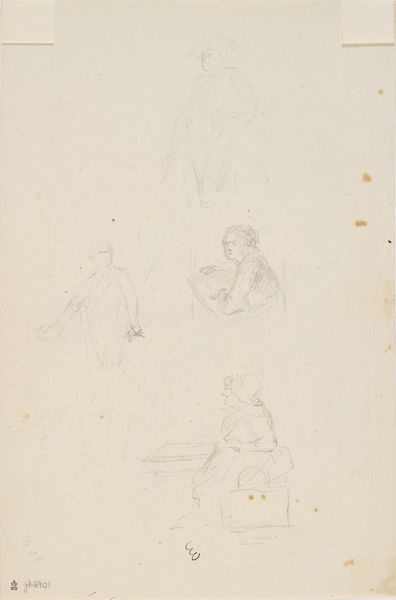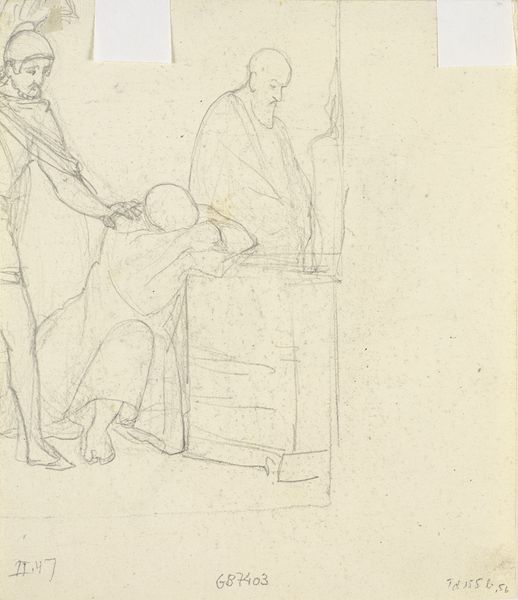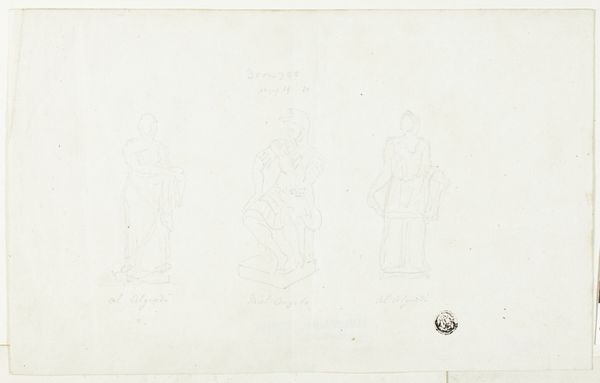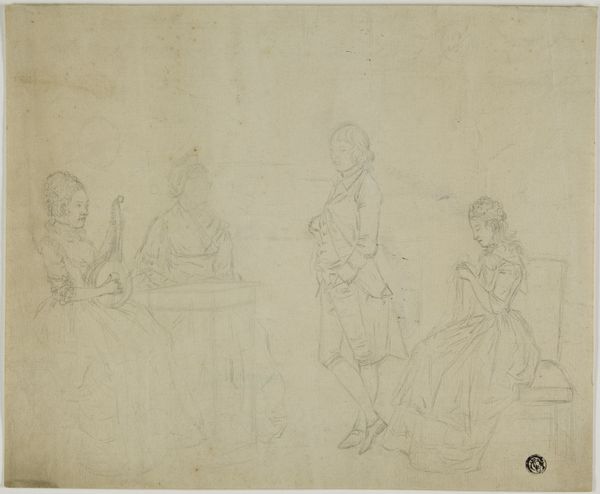
drawing, print, paper, ink, pencil, graphite, pen
#
drawing
#
narrative-art
# print
#
pencil sketch
#
classical-realism
#
figuration
#
paper
#
ink
#
ancient-mediterranean
#
pencil
#
graphite
#
pen
#
history-painting
Dimensions: 210 × 274 mm
Copyright: Public Domain
Curator: We're looking at a pen and graphite drawing by John Flaxman titled "Hector Chiding Paris." Editor: My first impression is one of subdued drama. It's almost minimalist in its composition, yet you sense the weight of the impending conflict. The lines are so delicate, the paper feels incredibly fragile. Curator: Indeed. Flaxman was deeply inspired by classical literature. Here, he captures a scene from the Iliad, where Hector confronts his brother Paris for shirking his duty in battle. Paris's choices, of course, eventually lead to the fall of Troy. Editor: So much tension conveyed through what looks like, fundamentally, a preliminary sketch. Was this intended as a study for something larger? What kind of paper are we even looking at here? The tooth feels smooth and modern but that discoloration along the edge suggests an interesting history. Curator: It's likely a preparatory drawing for one of Flaxman’s outline engravings, which were hugely popular at the time and circulated widely. It helped to create, and visualize, the classical imagery of heroism that was crucial in European and American identity building at that time. Editor: The mass production aspect is fascinating! It wasn't just about high art; it was about making these stories and images accessible to a wider audience through prints. That’s what resonates here, is its accessibility of line. There isn’t excessive shading. This speaks more to process, labor and reproduction. I’d be really interested to research this work more from a conservator’s perspective and see what that could teach us about its journey. Curator: And its continuous transmission, each stage affecting our interpretation of the present copy. Seeing it now, even as a faint graphite sketch, we’re still accessing echoes of those deeply-embedded archetypes. The helmet, the shield, and even Paris’s indolent posture… they all carry centuries of symbolic weight. It suggests a constant dialogue between past and present, in the visualization and making of art. Editor: Absolutely. The materials themselves—paper, graphite, ink, these were readily available, practical tools that bridged the gap between Flaxman’s artistic vision and the homes and minds of his contemporaries. Curator: I find myself pondering how Flaxman stripped down this grand narrative to its barest essentials, conveying such depth with so few lines. Editor: And I'm intrigued by the materiality and how that simple combination, through reproduction, created a significant cultural impact. It’s the story, yes, but also the object and how it circulated, and how that continues to speak to us now.
Comments
No comments
Be the first to comment and join the conversation on the ultimate creative platform.

